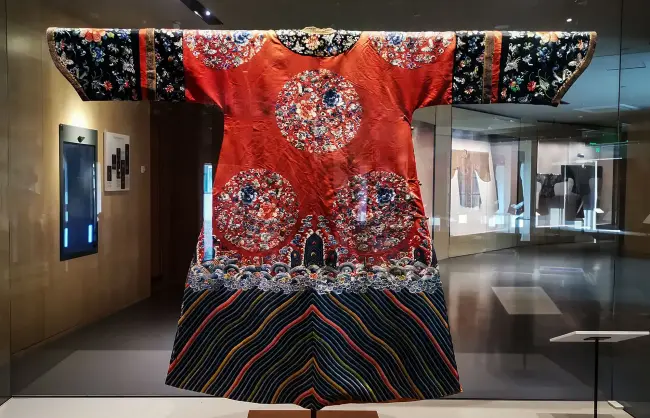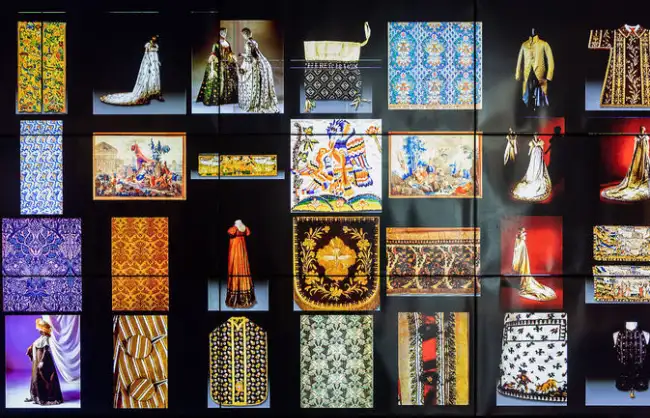The China National Silk Museum, situated in the vicinity of Hangzhou’s renowned West Lake, is a non-profit institution dedicated to the preservation, research, exhibition, and advancement of textiles, with a special focus on Chinese silk. As a highlight of your Hangzhou tour, this renowned China National Silk Museum stands out for its vast collection of textiles and costumes, making it one of the world’s leading institutions in this field.
The China National Silk Museum also carries the honor of being among China’s first state-level museums. Established in 1992, the museum received a facelift with renovations in 2016, enhancing its appeal for visitors seeking a deep dive into the history and artistry of traditional fabrics and attire.
China National Silk Museum Facts
- Location: 73-1 Yuhuangshan Road, Xihu District, Hangzhou, Zhejiang, China
- Opening time:9:00-17:00 from Tuesday to Sunday (no entry after 16:30); 12:00-17:00 on Monday (no entry after 16:30).
- Ticket price:Free
- Time needed:About 2 hours
- Best time to visit: All seasons
- Suited to:Anyone interested in silk, textiles, costumes, culture and history

What to See and Do in China National Silk Museum
Explore the Gorgeous Exhibition Halls
The China National Silk Museum has a total construction area of 24,635.6 square meters (including an underground area of 9,700 square meters), with an exhibition area of over 5,000 square meters. The China National Silk Museum houses silk artifacts found in different dynasties, with the earliest dates back to the Neolithic Age.
Here you can see the fabrics of Han and Tang dynasties unearthed along the Silk Road, Liao and Jin artifacts from the northern grasslands, garments in Song Dynasty from the Jiangnan region, official machine products of the Ming and Qing Dynasties, as well as modern cheongsams and scenic textiles. In addition, there is also a rich collection of ethnic and contemporary cultural relics.
Fashion Gallery
Chinese clothing culture enjoys a long history and has always been an important part in the etiquette system, a symbol of power and status, and a reflection of social economy, culture, and people’s aesthetic consciousness.
The Fashion Hall of the China Silk Museum features various sections showcasing Chinese clothing from different categories and periods, including Chinese wedding attire (on display from November 16, 2024, to February 28, 2025), the evolution of attire from the 1920s to the 2010s, and representative garments from the history of Western fashion. Anyone interested in clothing culture must not miss this visual feast!
Permanent Exhibition Hall
As the birthplace of silk, China possesses unique sericulture and silk weaving technique. The silk it produced is distinctive in charm, vibrant in color, and rich in profound cultural connotations. It is this one-of-a-kind, irreplaceable cultural heritage that gave rise to the Silk Road, which later served as a bridge connecting Eastern and Western civilizations.
If you are interested in the history of the Silk Road and silk collections, be sure to visit the Permanent Exhibition hall of the China Nation Silk Museum. Here, you will find a display of the five-thousand-year glorious journey of Chinese silk and the silk exhibits along this vast silk route, providing your Hangzhou tour with both an educational opportunity and artistic experience.
Textile Conservation Gallery
The Textile Conservation Gallery of China Silk Museum serves as a showcase hub for the Innovation Alliance within the National Cultural Relics Conservation Science and Technology Sector in Zhejiang Province. Its mission is to enhance the capacity for independent innovation in the preservation of textile artifacts and to provide visitors with an insider’s view of the conservation techniques and processes.
Xinyou Archive Center
The Xinyou Archive Center in the China National Silk Museum exhibits a wealth of modern textile fabric samples, precious textile personality archives, and historical materials related to sericulture, silk history, dyeing and weaving clothing history, textile archaeology, and the Silk Road. It also houses historically valuable Chinese and foreign periodicals, books, and audio-visual materials related to these topics.
Sericulture Gallery
The Sericulture gallery of China Silk Museum showcases the complete spectrum of sericulture and silk craftsmanship, from mulberry farming and silkworm husbandry to silk spinning, dyeing, weaving, and associated traditions. Here, visitors can experience up close the artistic charm of China’s sericulture and silk weaving skills, providing greater support for the protection and living heritage of Chinese sericulture and silk weaving techniques.
Participate in Various Events
Apart from briliiant exhibitionns, China National Silk Museum also holds various activites such as textile training, lecture, museum evening, social activity, education, museum on campus and festivals. All of them will surely create an impressive experience and fantabulous memory for your tour in Hangzhou.

Best Time to Visit China National Silk Museum
When traveling to Hangzhou, spring and autumn are the ideal times to visit the China National Silk Museum. Spring’s blooming flowers and West Lake’s scenic views, along with the chance to partake in tea-picking, make it a cultural highlight. Autumn, with its mild weather and dry conditions, offers a comfortable museum visit and a chance to see the lake’s red leaves and flowers in full bloom. Both seasons enhance your Hangzhou travel experience, blending the city’s silk heritage with its natural beauty.
How to Get to China National Silk Museum
- ByBus:Conveniently take one of the following bus routes—No. 12, 27, 28, 81, 87, 197, 308, 318, 354, 527, 808, or Y10—and disembark at the China National Silk Museum Station.
- By Subway: Opt for subway Line 1 and alight at Longxiangqiao Station. From there, you can either walk approximately 1.5 kilometers (0.9 miles) or take a taxi to reach the China National Silk Museum.
- By Taxi:Easily hail a taxi from anywhere in the city and instruct the driver to take you directly to the museum. The fare will vary depending on the distance and prevailing traffic conditions. For instance, a journey from Hangzhou Railway Station typically costs around 25 yuan (4 USD) and takes approximately 15 minutes.
- By Bicycle:Embrace a scenic and environmentally friendly approach by renting a bicycle from one of the numerous bike-sharing services in the city. Enjoy a delightful ride alongside the picturesque West Lake, culminating at theChina National Silk Museum.
Attractions nearby China National Silk Museum
West Lake: Hangzhou’s UNESCO World Heritage Site features a picturesque freshwater lake adorned with islands, bridges, gardens, temples, and pagodas. It is perfect for boating, cycling, walking, and sightseeing.
Lingyin Temple: It is one of China’s oldest and largest Buddhist temples, nestled at the foot of Lingyin Mountain. Linyin Temple houses a rich collection of cultural relics, statues, and artworks, with nearby hiking trails and fascinating caves.
Hefang Street: A celebrated thoroughfare in Hangzhou, embodies the rich cultural heritage and historical legacy of the ancient city. The street offers visitors a peek into its heritage through vintage architecture and time-honored shops. You can also sample local delicacies and admire exquisite crafts.









